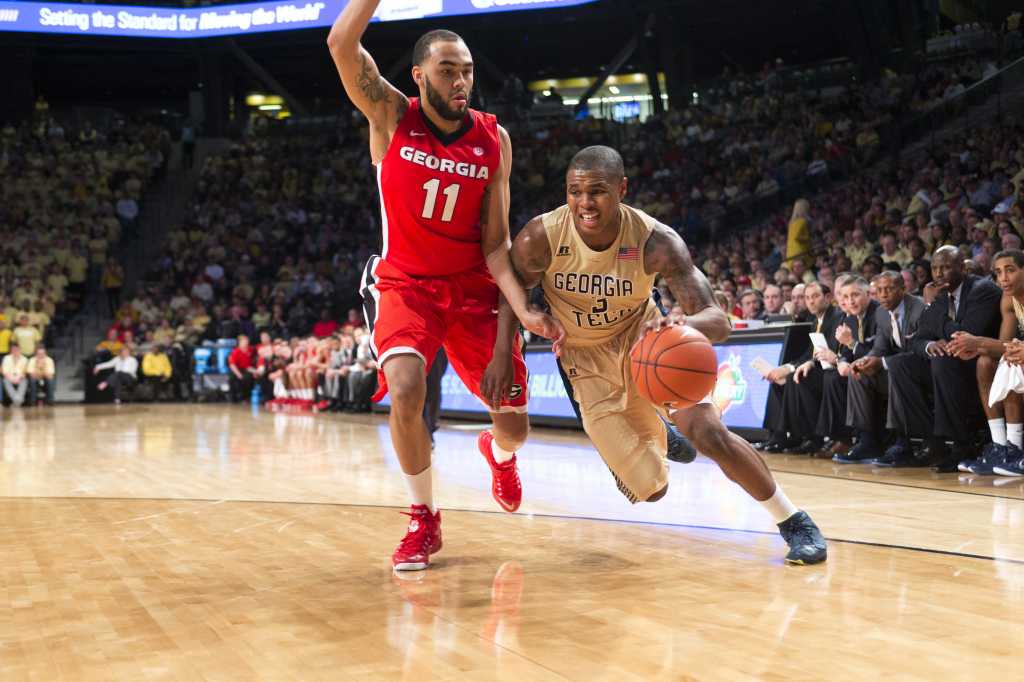
This offseason the NCAA rules committee made some major changes to the college basketball rulebook that could have a big impact on the future of the sport. The biggest rule change is changing the shot clock from 35 seconds to 30 seconds. However, there is some doubt that this rule change might not be good for the overall game. On the contrary, many pundits and analysts believe that this rule change and others are a big first step in the improvement of the game and the watch-ability of it.
Other additional rule changes include expanding the restricted area under the baskets and cutting the number of timeouts from five to four. The five second closely guarded rule will also be removed from the rulebook and coaches will no longer be allowed to call timeouts except for in dead ball situations. After much talk, the 10-second backcourt clock will no longer reset after a timeout and that rule has been exploited by coaches for many years. This rule change will reward teams for playing strong full court defense and will not allow the other team to call a timeout just to avoid a 10-second violation.
The last time the shot clock rule received a makeover was in 1993, when the clock was changed from 45 second to 35 seconds. By reducing the shot clock to 30 seconds, offenses and defenses will have to adjust their plays and strategies to fit this new up-tempo and higher possession game. But, with less time to get a good shot off, teams who struggle to score with a 35 second shot clock could potentially struggle more with less time.
Considering Tech struggled to score when they had 35 seconds to run their offense, the new 30 second shot clock rule could make the offense even less efficient. Last year Tech played a very slow paced offense, ranked as the 220th slowest paced team in the country. Their offense was rated as the 210th most efficient according to Ken Pomeroy’s efficiency ratings.
To succeed in college basketball with these new rules Tech will need to overhaul their offense. Many of their games were loss due to the team being unable to score at the end of the game when defensive pressure was the highest. Countless possessions resulted with forced shots at the buzzer and players unable to create high quality shots on their own.
These rules were made to help improve the quality of games for the best teams in the country, but the committee did not think about the bulk of the NCAA teams and the ones who already struggle to score with a 35 second shot clock. For many teams, this rule might allow them to score more points a game, but it could also result in a lower field goal percentage due to the less time to get into a half-court offense.
Over the past year Wisconsin and Virginia were notorious for winding the clock all the way down to 10 seconds before even attempting to try and shoot. Both of those teams were ranked in the top 5 for much of the entire year despite fact they were also in the top 10 for slowest paced teams in the country.
Wisconsin had the most efficient offense in the country by a landslide, but they had the talent and the skill to score whenever they felt like finally shooting. Most teams in the NCAA don’t have that skill and more teams might adapt Virginia’s style of play. Virginia plays a grind it out on ball defense which suffocates their opponent’s offense. With less time to shoot, there is also less time to defend. Virginia has shown it is possible to succeed with shooting as little as possible, but defending for as much time as possible. Their goal was to shorten the number of possessions as they could. The committee’s goal was to increase that number. If more teams begin to play like Virginia, the rules committee will not see the improvement in the game they were looking for.
College basketball is not the NBA and some people like college basketball for that specific reason. The NCAA rules committee seems obsessed with making the game as close to NBA as possible, but in reality the talent in college basketball may not be best suited to be playing with NBA type rules. Most teams have players who cannot create their own shot and with such huge talent disparities between leagues, one should not be trying to emulate the other. These rules might punish the smaller programs and make an even bigger disparity between the best teams and the teams who struggle to win half of their games.
After next season, there will be plenty of data to analyze on how the rule changes actually impacted the game, but the one thing these new rules should definitely accomplish is making it easier for teams to cut large leads, and possibly lead to more exciting finishes come March.
